Analysis of Light Grip Influence on Standing Posture
Abstract
1. Introduction
2. Materials and Methods
2.1. Participants
2.2. Experimental Setup
2.3. Experimental Procedure
- Light grip (LG): The participants were lightly gripping the handle with their right hand at the height chosen by the experimenter. Their other arm hung loosely along the body side.
- No grip (NG): The participants had both arms hanging loosely along the body sides.
2.4. Data Acquisition and Processing
2.4.1. Light Grip Monitoring Circuit
2.4.2. Postural Data
Acquisition
Processing
- A spatial criterion: we chose the area of the CoP excursion since it illustrates both the AP and the ML directions. This area was computed as the area of the ellipse encompassing 90% of the CoP points during a trial.
- A frequency-based criterion: we computed the power spectral density (PSD) to illustrate the frequency content of the CoP excursion in the AP and ML directions and its dependence on the experimental condition, NG or LG. For each direction (AP or ML), the trials of all participants in each condition (NG or LG) were merged to increase the number of samples. Besides, for both conditions, we used the Matlab function pwelch in association with the Hann window. The window length was set to 240 samples and the overlap to 30%. This ensured a good trade-off between the correctness of the result and the smoothing of the PSD. With this tuning, the frequency resolution was about Hz. The total power corresponding to the area under the PSD curves will also be used to discuss the energetics of postural sway.
3. Results
3.1. Forces Applied to the Handle
3.2. Reduction of the Area of Sway
3.3. Correlation between the Forces Applied to the Handle and the Body Sway
3.4. Frequency Analysis
4. Discussion and Conclusions
4.1. Regarding the Light Grip Condition
4.2. Light Grip Reduces Sway Area
4.3. Forces Applied to the Handle Led Postural Sway
4.4. PSD Analyses Confirm the Sensory Nature of Light Grip
4.5. Concluding Remarks
Author Contributions
Funding
Institutional Review Board Statement
Informed Consent Statement
Data Availability Statement
Conflicts of Interest
Abbreviations
| FSR | Force sensing resistor |
| CoP | Center of pressure |
| LT | Light touch |
| LG | Light grip |
| NG | No grip |
| AP | Anteroposterior |
| ML | Mediolateral |
References
- Horak, F.B. Postural orientation and equilibrium: What do we need to know about neural control of balance to prevent falls? Age Ageing 2006, 35, ii7–ii11. [Google Scholar] [CrossRef]
- Mann, W.C.; Llanes, C.; Justiss, M.D.; Tomita, M. Frail Older Adults’ Self-Report of Their Most Important Assistive Device. OTJR Occup. Particip. Health 2004, 24, 4–12. [Google Scholar] [CrossRef]
- Murray, M.P.; Seireg, A.H.; Scholz, R.C. A survey of the time, magnitude and orientation of forces applied to walking sticks by disabled men. Am. J. Phys. Med. 1969, 48, 1–13. [Google Scholar]
- Chen, C.; Chen, H.; Wong, M.; Tang, F.; Chen, R. Temporal stride and force analysis of cane-assisted gait in people with hemiplegic stroke. Arch. Phys. Med. Rehabil. 2001, 82, 43–48. [Google Scholar] [CrossRef]
- Jeka, J.; Oie, K.; Schöner, G.; Dijkstra, T.; Henson, E. Position and velocity coupling of postural sway to somatosensory drive. J. Neurophysiol. 1998, 79, 1661–1674. [Google Scholar] [CrossRef] [PubMed]
- Clapp, S.; Wing, A.M. Light touch contribution to balance in normal bipedal stance. Exp. Brain Res. 1999, 125, 521–524. [Google Scholar] [CrossRef] [PubMed]
- Jeka, J.J.; Lackner, J.R. Fingertip contact influences human postural control. Exp. Brain Res. Exp. Hirnforsch. ExpÉRimentation CÉRÉBrale 1994, 100, 495–502. [Google Scholar] [CrossRef]
- Rabin, E.; Bortolami, S.B.; DiZio, P.; Lackner, J.R. Haptic Stabilization of Posture: Changes in Arm Proprioception and Cutaneous Feedback for Different Arm Orientations. J. Neurophysiol. 1999, 82, 3541–3549. [Google Scholar] [CrossRef] [PubMed]
- Jeka, J.; Oie, K.S.; Kiemel, T. Multisensory information for human postural control: Integrating touch and vision. Exp. Brain Res. 2000, 134, 107–125. [Google Scholar] [CrossRef] [PubMed]
- Boonsinsukh, R.; Panichareon, L.; Phansuwan-Pujito, P. Light touch cue through a cane improves pelvic stability during walking in stroke. Arch. Phys. Med. Rehabil. 2009, 90, 919–926. [Google Scholar] [CrossRef]
- Jeka, J.J.; Easton, R.D.; Bentzen, B.L.; Lackner, J.R. Haptic cues for orientation and postural control. Percept. Psychophys. 1996, 58, 409–423. [Google Scholar] [CrossRef]
- Albertsen, I.M.; Temprado, J.J.; Berton, E. Effect of haptic supplementation on postural stabilization: A comparison of fixed and mobile support conditions. Hum. Mov. Sci. 2010, 29, 999–1010. [Google Scholar] [CrossRef][Green Version]
- Sozzi, S.; Crisafulli, O.; Schieppati, M. Haptic Cues for Balance: Use of a Cane Provides Immediate Body Stabilization. Front. Neurosci. 2017, 11, 705. [Google Scholar] [CrossRef]
- Trujillo-León, A.; Bachta, W.; Vidal-Verdú, F. Tactile Sensor-Based Steering as a Substitute of the Attendant Joystick in Powered Wheelchairs. IEEE Trans. Neural Syst. Rehabil. Eng. 2018, 26, 1381–1390. [Google Scholar] [CrossRef] [PubMed]
- Trujillo-León, A.; Ady, R.; Vidal-Verdú, F.; Bachta, W. A tactile handle for cane use monitoring. In Proceedings of the 2015 37th Annual International Conference of the IEEE Engineering in Medicine and Biology Society (EMBC), Milano, Italy, 25–29 August 2015; pp. 3586–3589. [Google Scholar] [CrossRef]
- Trujillo-León, A.; de Guzmán-Manzano, A.; Velázquez, R.; Vidal-Verdú, F. Generation of Gait Events with a FSR Based Cane Handle. Sensors 2021, 21, 5632. [Google Scholar] [CrossRef]
- Interlink Electronics. FSR402®. 2021. Available online: https://www.interlinkelectronics.com/fsr-402 (accessed on 7 June 2021).
- Lu, C.L.; Yu, B.; Basford, J.R.; Johnson, M.E.; An, K.N. Influences of cane length on the stability of stroke patients. J. Rehabil. Res. Dev. 1997, 34, 91–100. [Google Scholar] [PubMed]
- Sardain, P.; Bessonnet, G. Forces Acting on a Biped Robot. Center of Pressure—Zero Moment Point. IEEE Trans. Syst. Man Cybern. A Syst. Humans 2004, 34, 630–637. [Google Scholar]
- Zatsiorsky, V.M.; Duarte, M. Instant equilibrium point and its migration in standing tasks: Rambling and trembling components of the stabilogram. Motor Control. 1999, 3, 28–38. [Google Scholar] [CrossRef]
- Prieto, T.E.; Myklebust, J.B.; Hoffmann, R.G.; Lovett, E.G.; Myklebust, B.M. Measures of postural steadiness: Differences between healthy young and elderly adults. IEEE Trans. Biomed. Eng. 1996, 43, 956–966. [Google Scholar] [CrossRef]
- Sakanaka, T.E.; Gill, J.; Lakie, M.D.; Reynolds, R.F. Intrinsic ankle stiffness during standing increases with ankle torque and passive stretch of the Achilles tendon. PLoS ONE 2018, 13, 1–21. [Google Scholar] [CrossRef] [PubMed]
- Johannsen, L.; Wing, A.M.; Hatzitaki, V. Effects of Maintaining Touch Contact on Predictive and Reactive Balance. J. Neurophysiol. 2007, 97, 2686–2695. [Google Scholar] [CrossRef]
- Zatsiorsky, V.M.; Duarte, M. Rambling and trembling in quiet standing. Motor Control 2000, 4, 185–200. [Google Scholar] [CrossRef] [PubMed]
- Vallbo, A.; Johansson, R. Properties of cutaneous mechanoreceptors in the human hand related to touch sensation. Hum. Neurobiol. 1984, 3, 3–14. [Google Scholar] [PubMed]
- Ren, Z.; Nie, J.; Shao, J.; Lai, Q.; Wang, L.; Chen, J.; Chen, X.; Wang, Z.L. Fully Elastic and Metal-Free Tactile Sensors for Detecting Both Normal and Tangential Forces Based on Triboelectric Nanogenerators. Adv. Funct. Mater. 2018, 28, 1802989. [Google Scholar] [CrossRef]
- D’Amore, A.; De Maria, G.; Grassia, L.; Natale, C.; Pirozzi, S. Silicone-rubber-based tactile sensors for the measurement of normal and tangential components of the contact force. J. Appl. Polym. Sci. 2011, 122, 3757–3769. [Google Scholar] [CrossRef]
- Castellanos-Ramos, J.; Navas-González, R.; Vidal-Verdú, F. Tri-axial tactile sensing element. In Bio-MEMS and Medical Microdevices; Tserepi, A., Delgado-Restituto, M., Makarona, E., Eds.; International Society for Optics and Photonics, SPIE: Bellingham, WA, USA, 2013; Volume 8765, pp. 144–153. [Google Scholar]
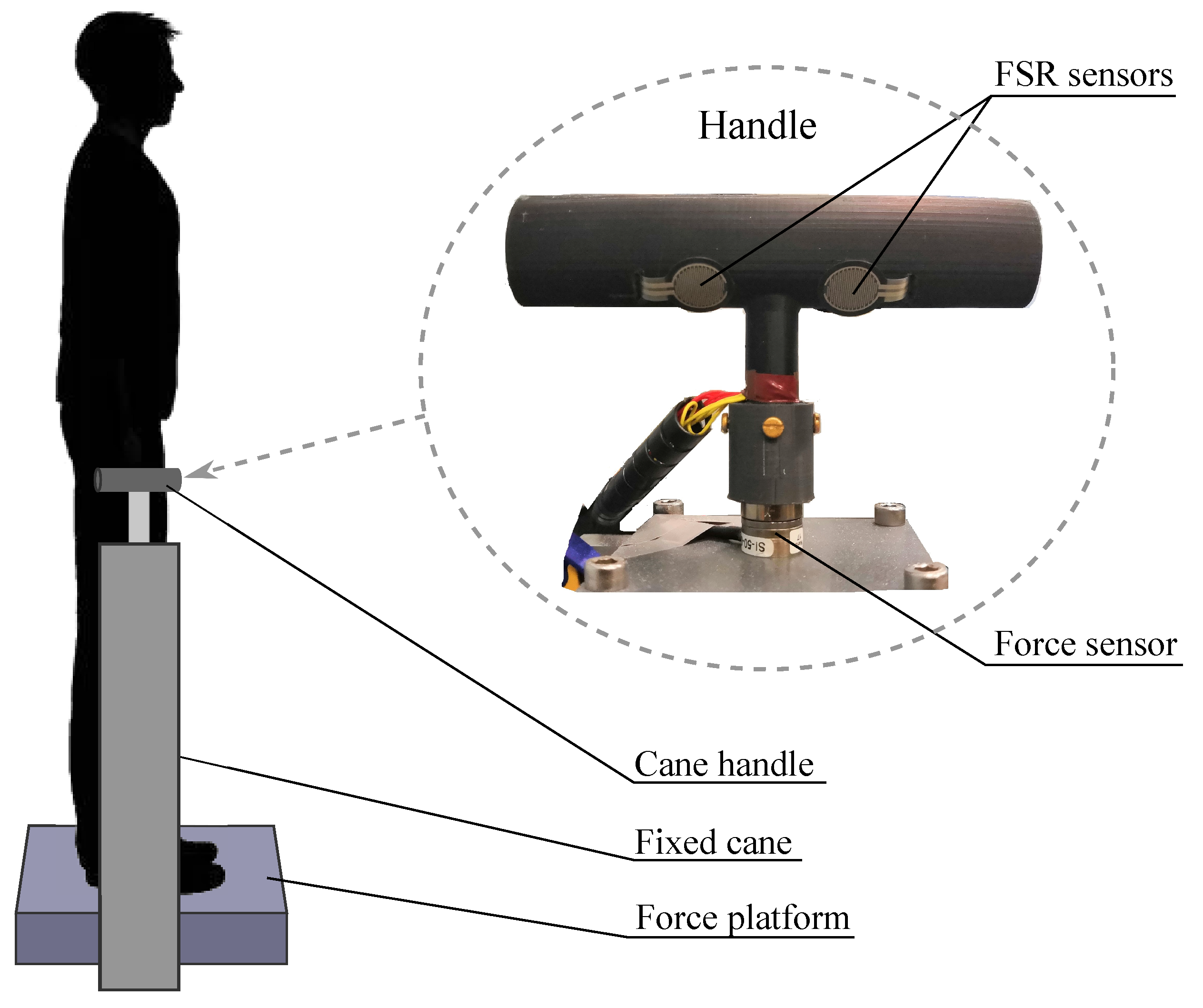
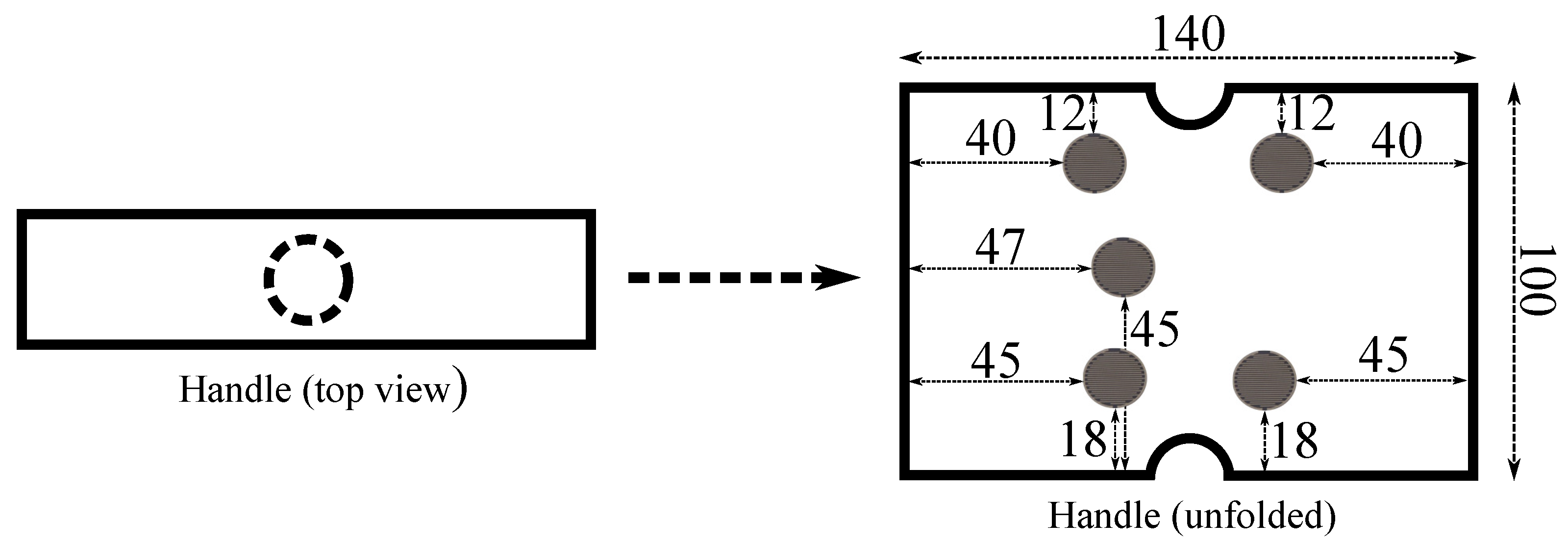
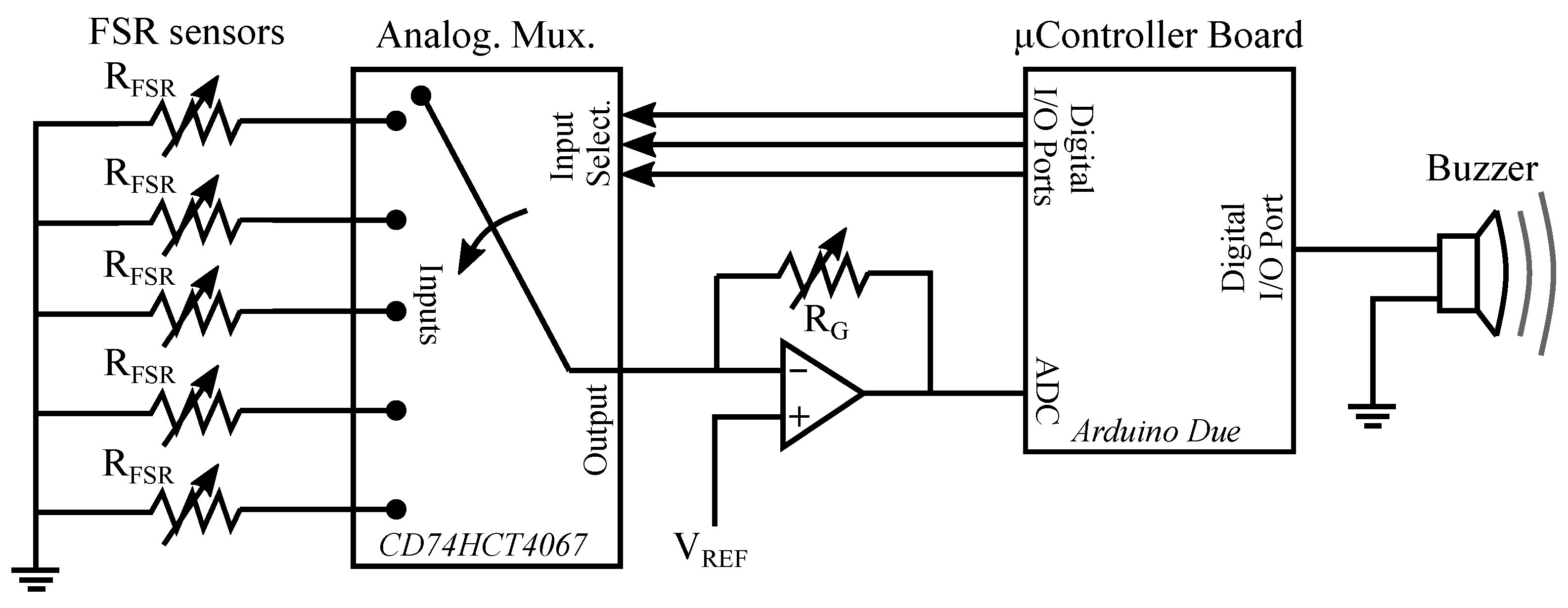


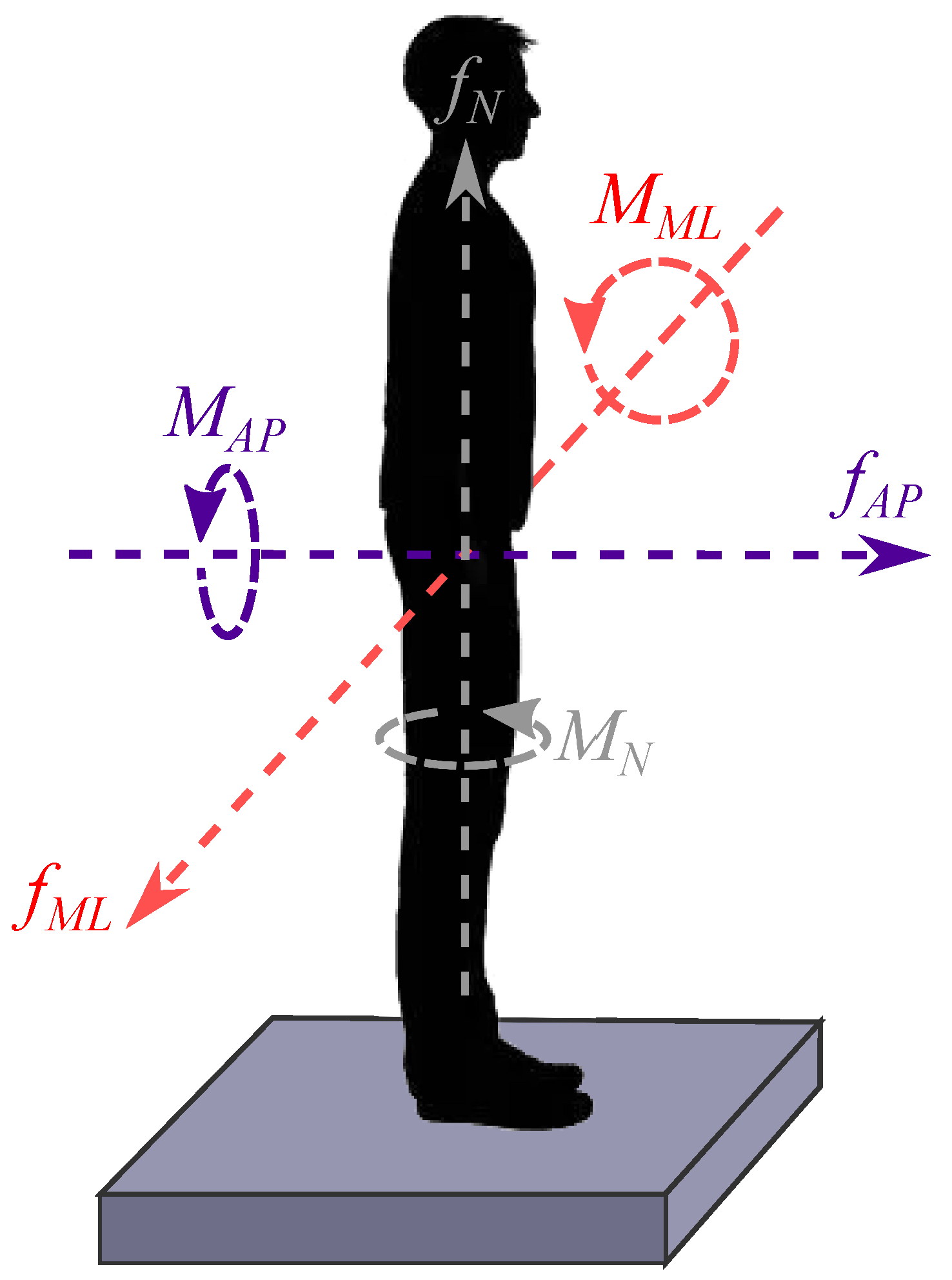
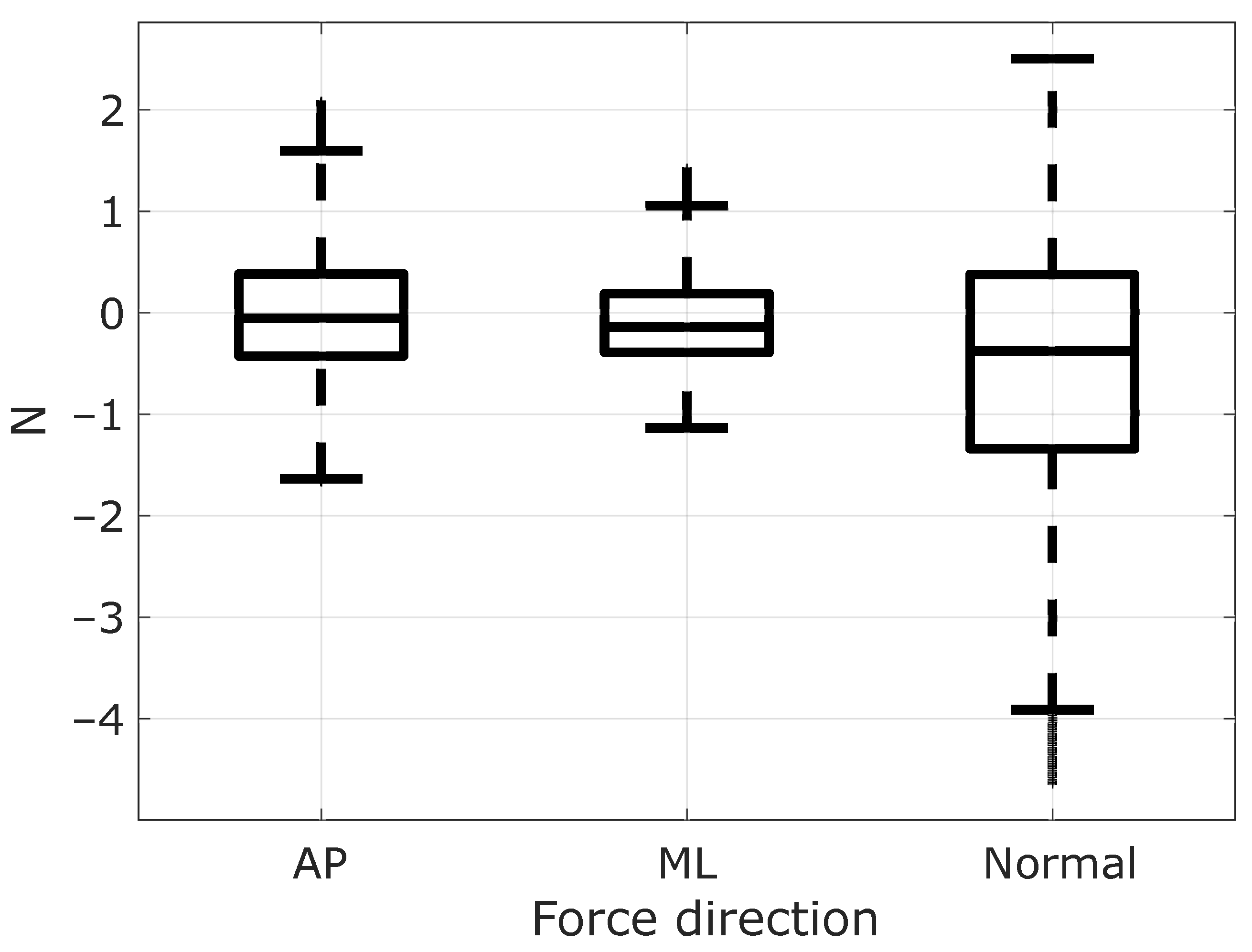
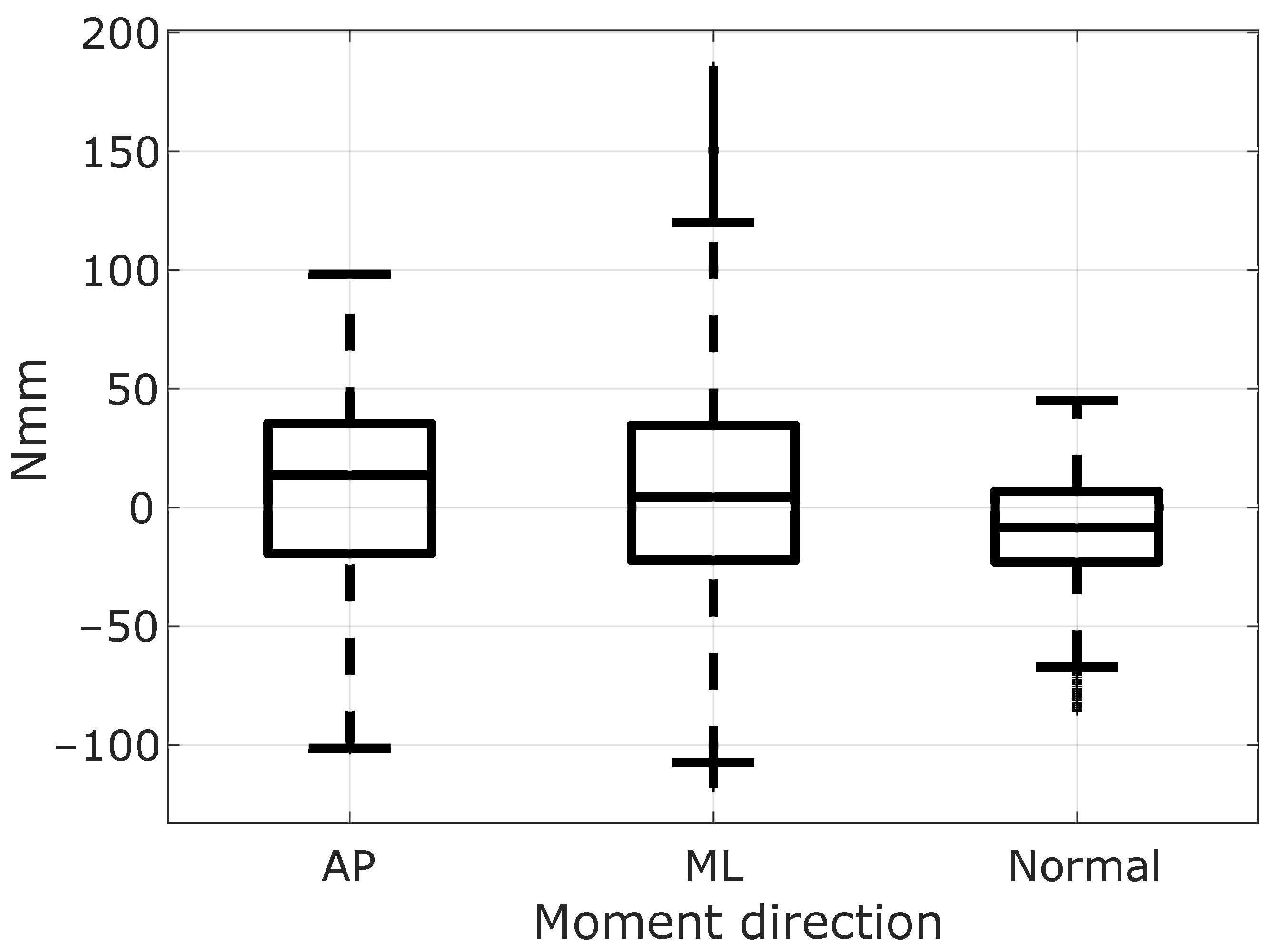
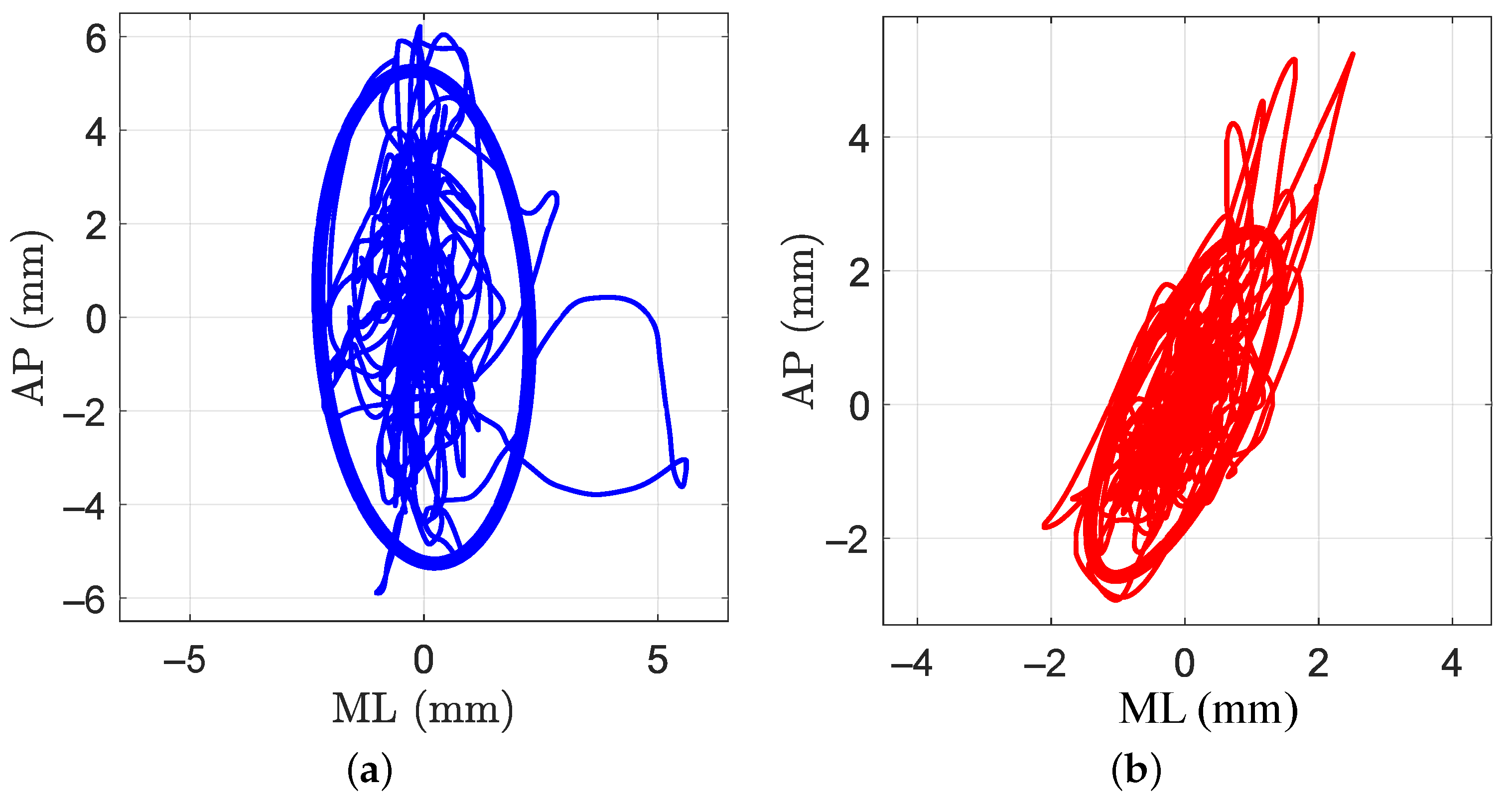
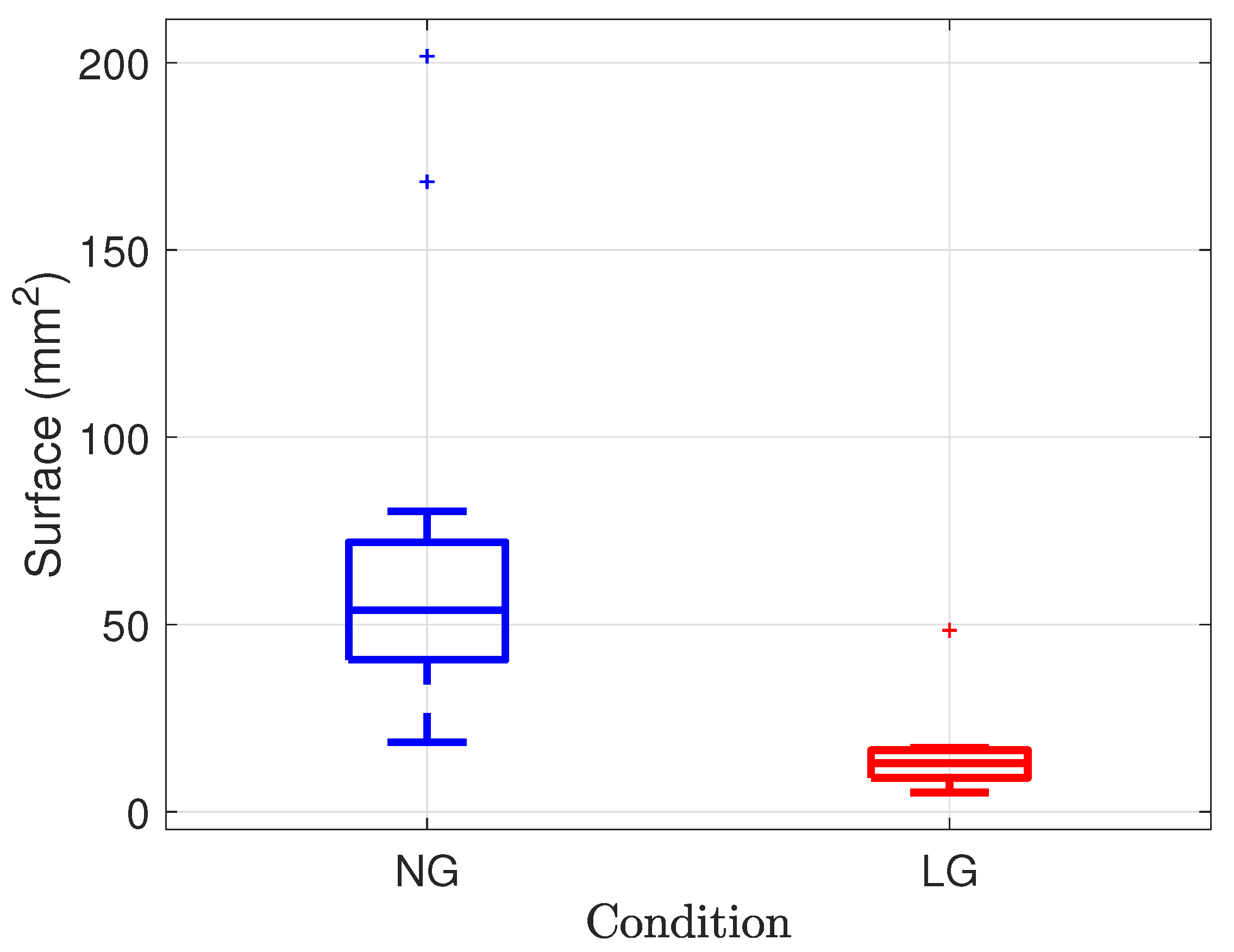
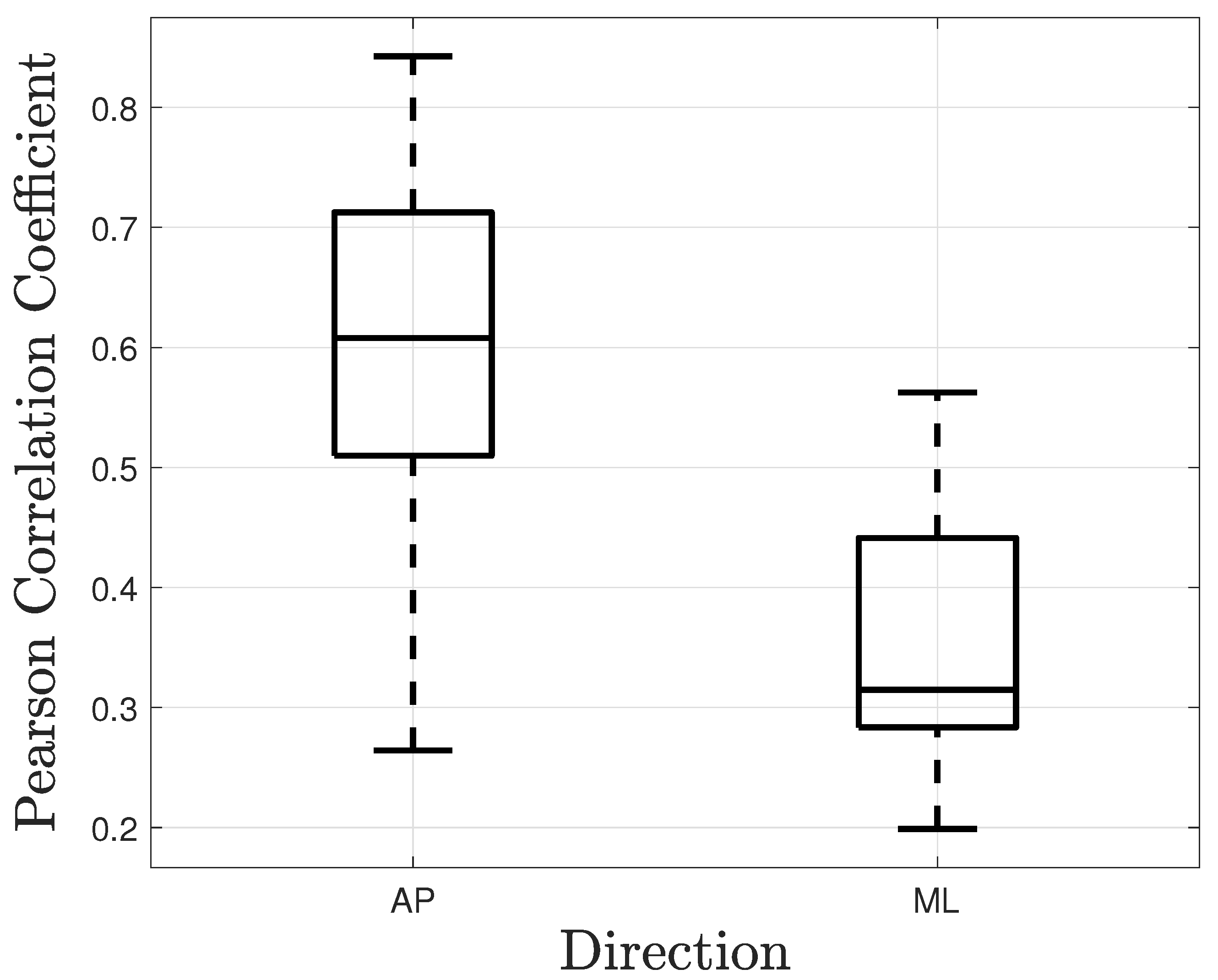
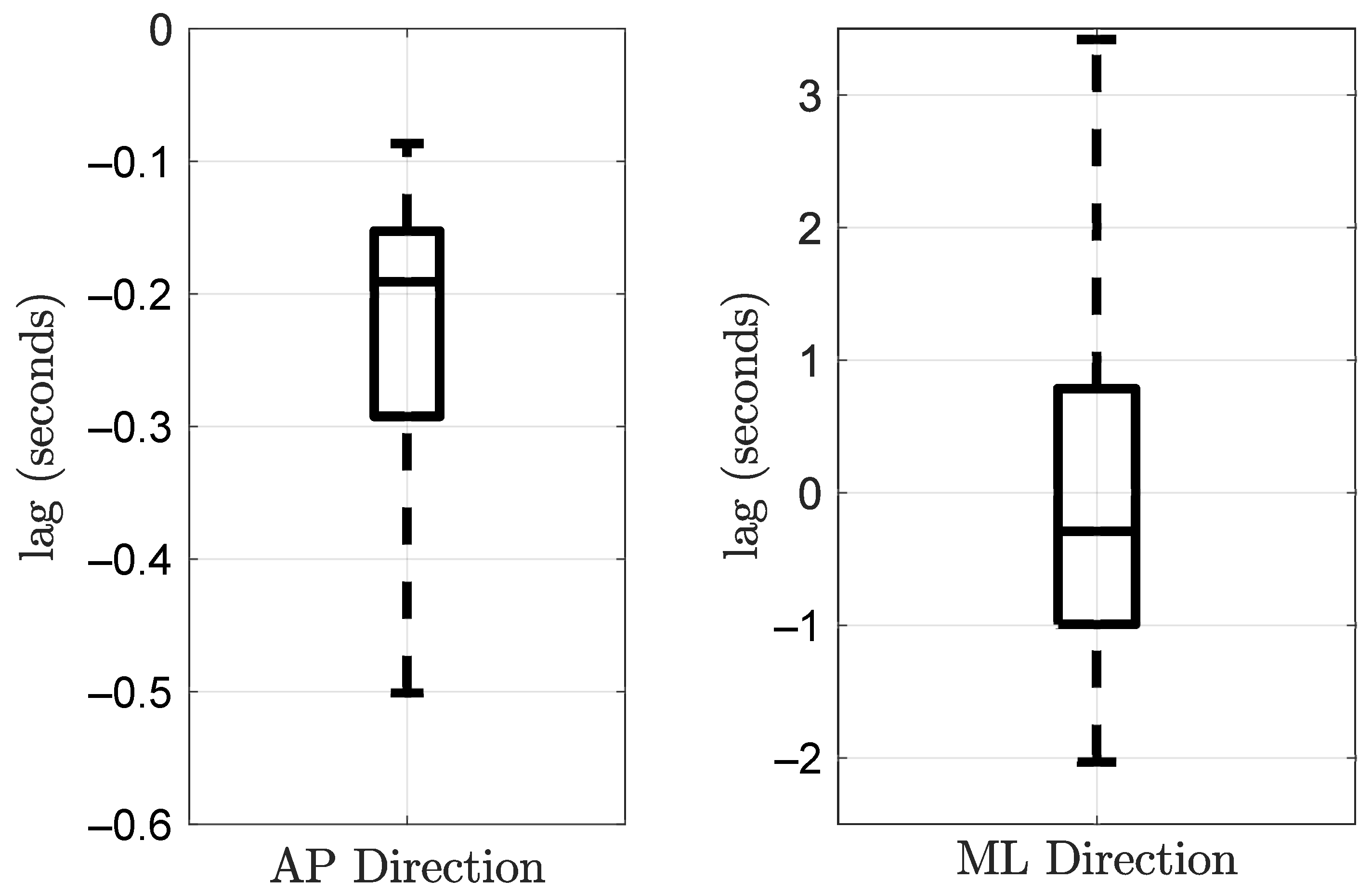
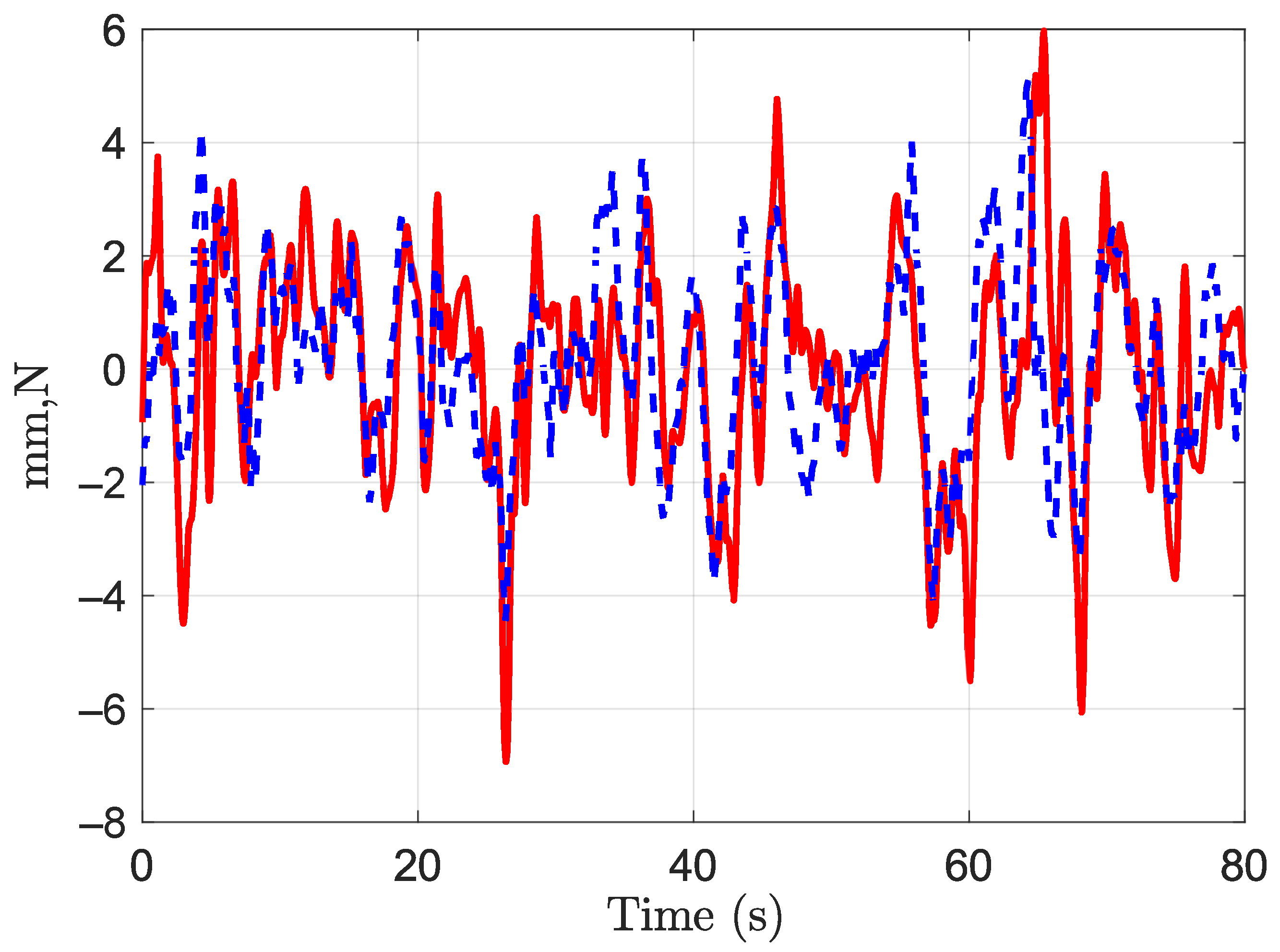
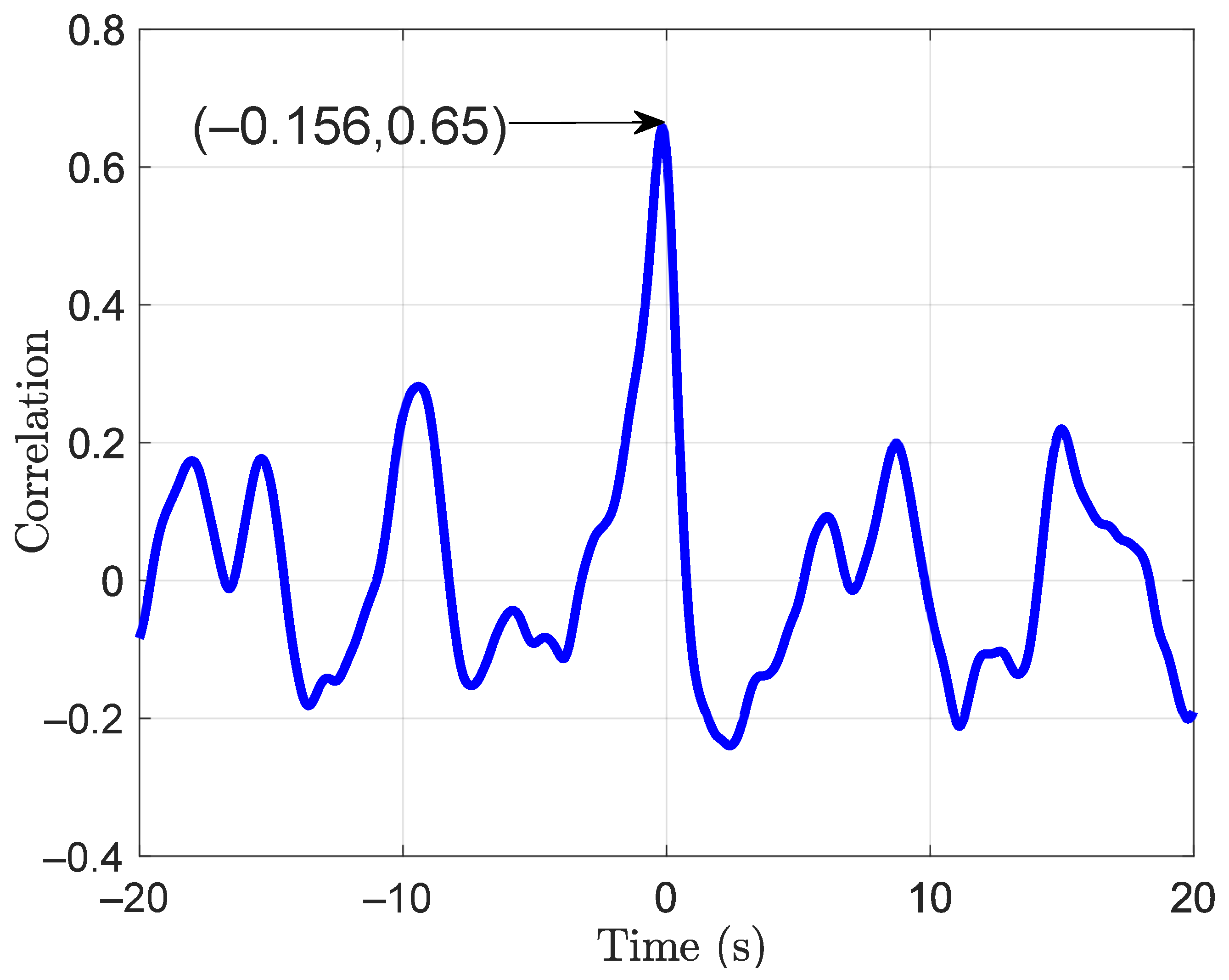
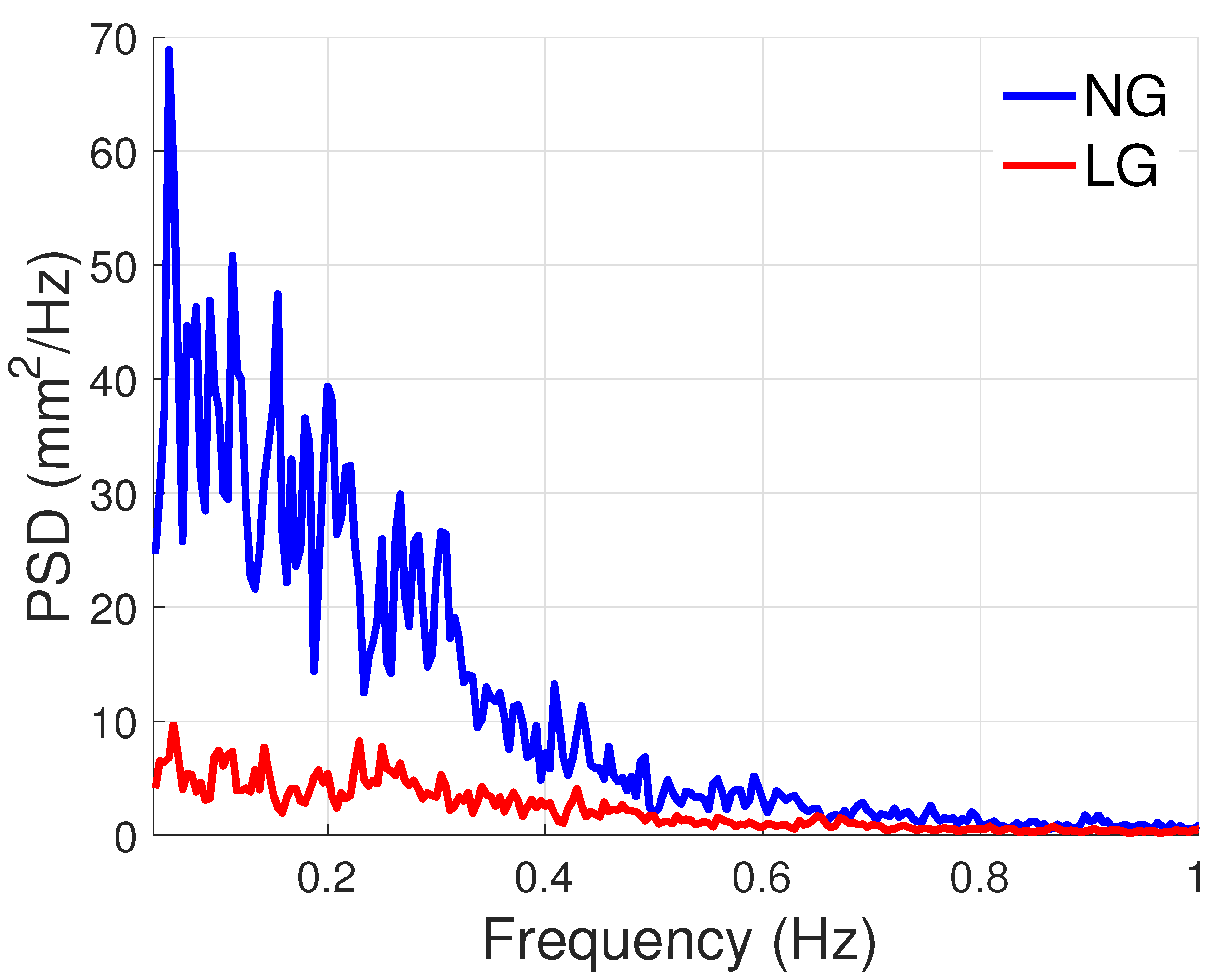
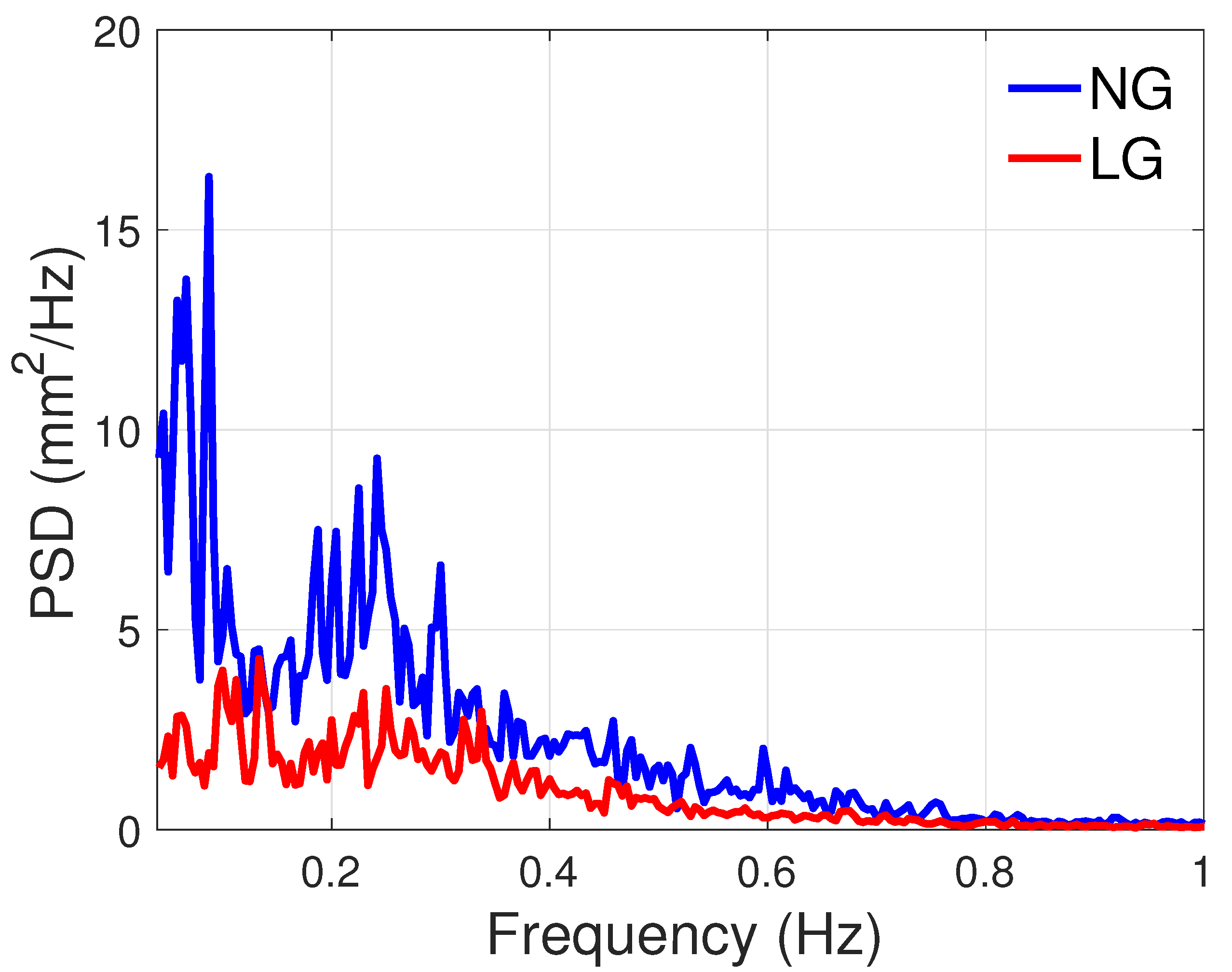
| fAP | fML | fNormal | MAP | MML | MNormal | |
|---|---|---|---|---|---|---|
| Median | −0.05 N | −0.14 N | −0.37 N | 13.59 Nmm | 4.26 Nmm | −8.64 Nmm |
| IQR | 0.8 N | 0.57 N | 1.7 N | 54.68 Nmm | 56.91 Nmm | 29.59 Nmm |
Publisher’s Note: MDPI stays neutral with regard to jurisdictional claims in published maps and institutional affiliations. |
© 2021 by the authors. Licensee MDPI, Basel, Switzerland. This article is an open access article distributed under the terms and conditions of the Creative Commons Attribution (CC BY) license (https://creativecommons.org/licenses/by/4.0/).
Share and Cite
Bellicha, A.; Trujillo-León, A.; Vérité, F.; Bachta, W. Analysis of Light Grip Influence on Standing Posture. Sensors 2021, 21, 8191. https://doi.org/10.3390/s21248191
Bellicha A, Trujillo-León A, Vérité F, Bachta W. Analysis of Light Grip Influence on Standing Posture. Sensors. 2021; 21(24):8191. https://doi.org/10.3390/s21248191
Chicago/Turabian StyleBellicha, Angélina, Andrés Trujillo-León, Fabien Vérité, and Wael Bachta. 2021. "Analysis of Light Grip Influence on Standing Posture" Sensors 21, no. 24: 8191. https://doi.org/10.3390/s21248191
APA StyleBellicha, A., Trujillo-León, A., Vérité, F., & Bachta, W. (2021). Analysis of Light Grip Influence on Standing Posture. Sensors, 21(24), 8191. https://doi.org/10.3390/s21248191






